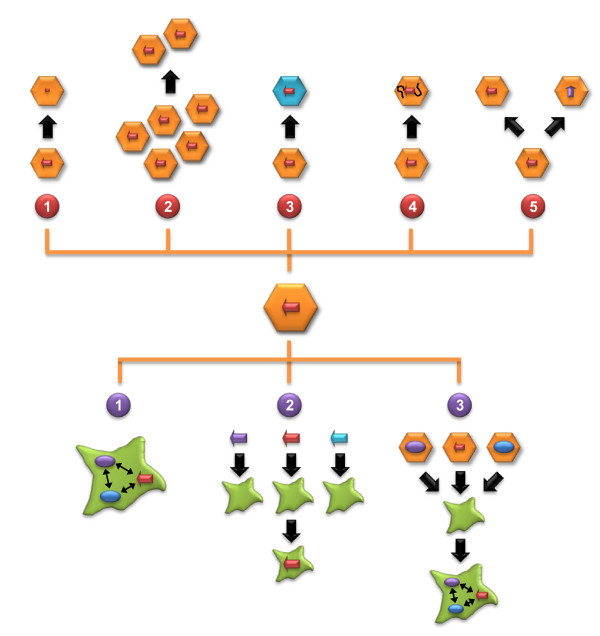Figure 1.
Schematic overview of strategies to alleviate in vivo RNAi toxicity. As explained in the text, one can roughly distinguish strategies that aim to improve the RNA interference (RNAi) vector itself (top half) or that instead focus on the cellular component (bottom half). Amongst the former, the main approaches reported so far include a reduction of short hairpin RNA (shRNA) expression per given vector dose via the use of moderate promoters (1-red), a limitation of the overall vector dose applied (2-red), shRNA delivery via a specific viral vector serotype (3-red), embedding of the shRNA sequence into a miRNA scaffold (4-red) or a combination of RNAi technologies with further inhibitors of gene expression (5-red). On the cellular side, currently pursued strategies comprise mathematical modeling of all rate-limiting factors in the cell (1-purple), cell-based screening for potent and minimally toxic RNAi triggers (2-purple) and controlled overexpression of known rate-limiting cellular components, together with the RNAi vector (3-purple).

